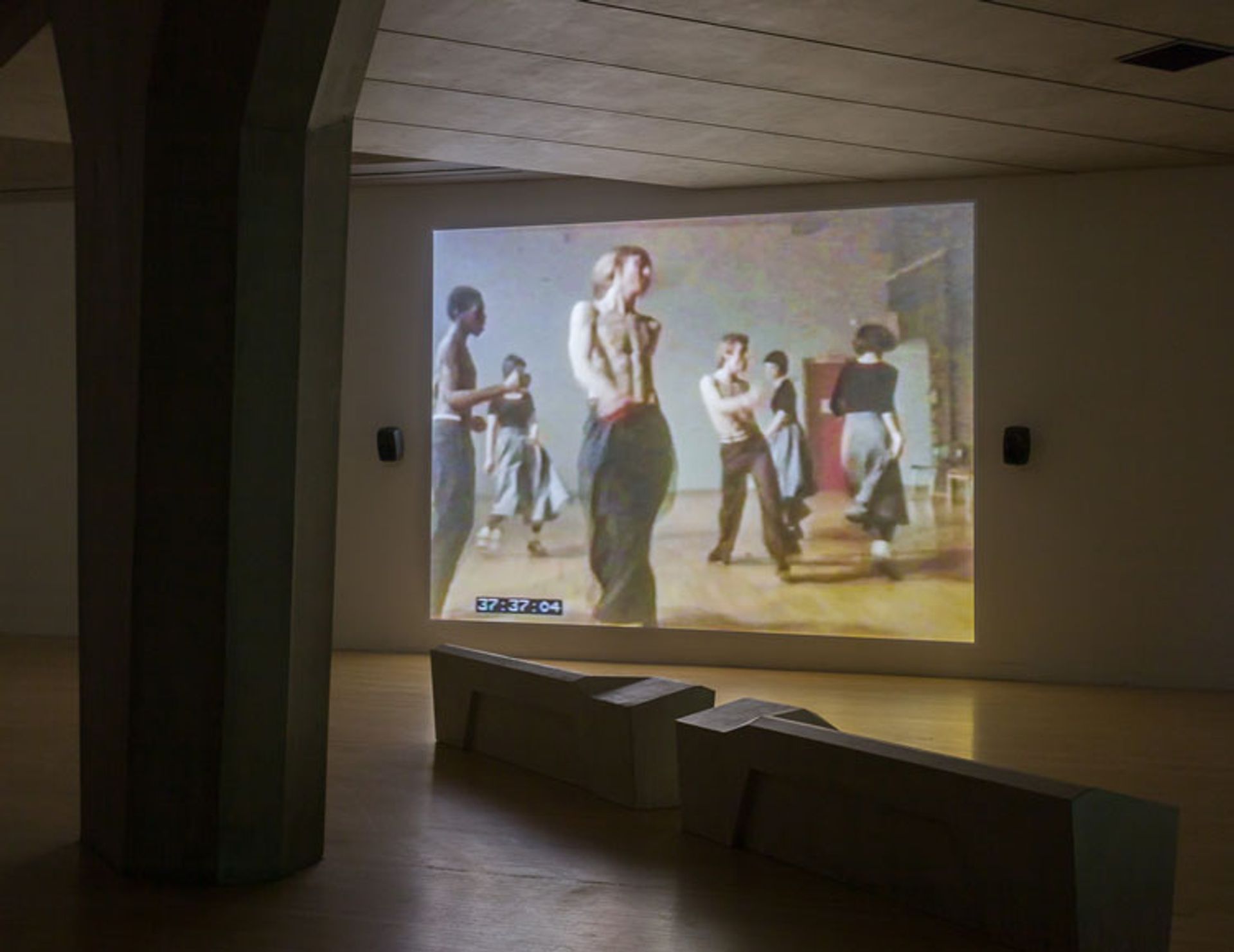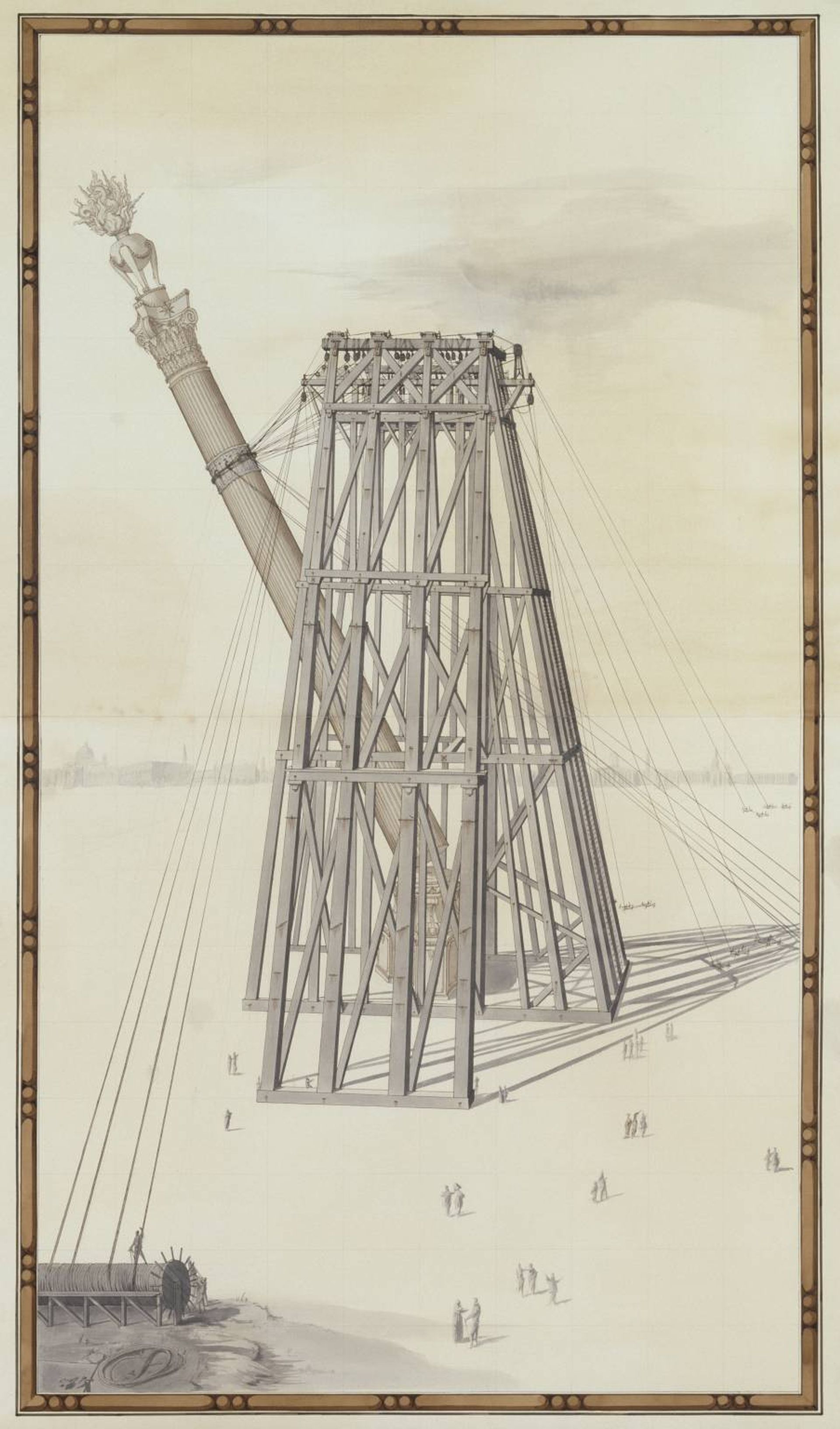... what defines the queerness in his art
“It’s not holding a placard up and saying ‘gay rights’—I don’t consider that queer art, I find it to be straightforward political art, activism. Queer art for me is always about pretence, and working through shadows and other narratives. I grew up looking at entirely straight films, the only experience I could possibly have of seeing myself represented in mainstream Hollywood was to weirdly put myself within a heterosexual scene on the big screen. My generation grew up living mainstream culture through a distorted lens, through a sort of side glance—certainly earlier generations even more so. And so that I think has led to an ironic stance that isn't void of politics. It's all about talking about something via another platform or via another history."

Mark Leckey's Fiorucci Made Me Hardcore (1999). Installation view, O’ Magic Power of Bleakness, Tate Britain, London, 2020.
... the films of Mark Leckey
"I think his films are always rich, sophisticated, visually stimulating and deep. And they always leave you wanting more. Watching one of his films is not a mercy fuck. You get more than you put into it."

Pablo Bronstein's Patisseries and Confections (2020-21).© Pablo Bronstein
... his collection of antique sugar casters
"The fact that they look like these perfect phallic objects with ornaments encrusted on them is too much for me to resist. I could just buy these things again and again. But now I'm trying to behave like a more serious connoisseur-collector and buy things that I don't have. I want to publish a book about them, I just need to find someone with £20,000 to spare."

Pablo Bronstein's Erecting of the Paternoster Square Column (2008). Courtesy of Tate
... his series of works on the redevelopment of Paternoster Square in the City of London, which touched upon gentrification, history and postmodern building practices
"[The square] became this sort of battleground between how you reconfigure public, or semi-public space in an historically sensitive area. It also feels more public, which is partly Classicism being put to use. I could take photographs there all I wanted when it was just enormous slabs that no one was interested in. But now you try to take a photograph there and security guards come running at you. So clearly, it is a less public space, despite the fact that it is using a whole load of language of piazzas and openness and free space, which is, of course, entirely false in real terms. It presents itself through a clever use of old and new. By clever, I don't mean particularly well-executed—I think it's pretty disgusting. But the fact that they're doing it is a good fudge, because most people can't read buildings. And that works to the advantage of certain other people. A lot of people can't read architectural drawings, can't read plans. For example, a lot of people can't read a facade, and they will think it looks old, because it's got a sash window that was made three years ago stuck onto it."
• A brush with… series 7 runs from 17 November-15 December 2021, with episodes released on Wednesdays. You can download and subscribe to the podcast here. This episode is sponsored by Bloomberg Connects.
• Pablo Bronstein: Hell in its Heyday, Sir John Soane's Museum, London, until 2 January 2022



